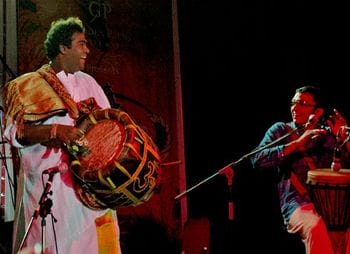Bengaluru’s rock history dates back to the 70s when a pioneering set took stage at Cubbon Park to strum a few famous English numbers on Independence Day. This innocuous strumming attracted derision from the then conservative Bengalurian, but sparked off a movement that has blossomed into the rich rock music scene of today.
Early pioneers included the likes of Geoffrey Pope, Karl Peters, Amit Heri and Roberto Narain, iconic names among those who know their music. Sadly, most dissolved into oblivion, while some turned to coaching/selling music equipment and a bare few managed to retain label credibility in the world of music.
Things have changed today. There are perhaps ten times as many rock bands as there were in the 70s at Bengaluru. Musicians lead dual lives, with IT, BPO or call center jobs sustaining their musical passions. High salaries from day jobs more than justify band pursuits. This in addition to the indomitable spirit of the Bengalurian continues to remain the key driver for musicians pursuing their band-obligations.

A jugalbandi performance in progress at a 2008-New Year eve concert. The band is Swarathma, a popular local band that composes its own music. File pic: Shreya Dasgupta.
A vast majority chooses to play black/heavy metal or thrash genres; newer genres like jazz and fusion music have quite some untapped space to grow here. This was quite evident at the Rock Ethos event and the numerous college and corporate cultural festivals that happen in the city.
Music at Bengaluru and its audience have traversed multiple phases, but have broadly moved from a wannabe phase into a creative paradigm. This movement underlines an evolution that is poised towards bigger perhaps, global impact in the ensuing years. It is only recently that bands have begun taking the risk of choosing to play originals over covers. I remember reading an article about the Bengaluru Habba ’04 in a leading newspaper, where the reporter had rudely posited that as a rule, bands should be asked to play fifty percent original and fifty percent covers in their performances.
Ironically, even though such bureaucratic rules have no place in the creative world, the comment itself seemed to indicate a tipping point. If at all there was anything that has held back the Bengaluru musician, it must be the cover-o-philia.
Bands chose to play covers for two reasons – it is a good way to start practicing and attract crowds quickly. Original compositions do not have a reference point and challenges both the creative as well as managerial abilities of a band. Bands that play covers move ahead with the false hope that the instant cheering from their audiences will turn into permanent fandom. Alas, however, people tend to get bored quickly and move over to the next cover band. Original compositions take some time to seep into the audience, but ends up creating space for the band and winning real fans on the long term.
In a concert in 2006, the erstwhile Silk Route from Delhi (a Hindi pop-rock band that had an immensely popular and top-10 album in the mid-nineties – Boondein) boldly implored Bengalurians to denounce cover bands and encourage original compositions. Had this been two years earlier, jeers from the audience would have collimated throughout Silk Route’s show, but things seemed to be changing, thankfully.
Today, leading bands like Thermal and Quarter (TAAQ), Kryptos, Swarathma, Vinapra and the like no longer swathe their performances with cover spins, but they continue to be the minority. Words from Bruce Lee Mani (front-man of TAAQ), during one of TAAQ’s Rainseed performances – “I don’t know why I continue play these stupid covers”, reflect the distaste.
The challenges
There are multiple avenues for Bengaluru’s bands today with several obstacles as well, but then, nothing’s easy anyway. There are more events and platforms to showcase a band’s ware, literally throughout the band’s lifecycle. The internet is an easy medium to cast music, advertise or even seek band members. Jam room availability continues to be the biggest pain, but help’s on the way with concepts like the Jam Hut at Devanahalli.
Besides these, career pressures and band un-cohesion continue to be issues. The wide adoption of programmed, disco and lounge music is another area of concern.
However, such issues appear to be irritations rather than killers of the Bengaluru music scene. It is the cover-addiction which will really impede bands and lead to their ultimate demise. Bands can be so bold as to experiment with languages and genres, but they really do need to push the bar on original compositions.
There are examples. Erstwhile Anatragni (a Bengaluru-based folk-rock band known for rich vocals and instrumentation) which turned into the Raghu Dixit Project, has had an arduous, but successful journey into the big league. Raghupathy Dixit, an M Sc. microbiology graduate who started this band in the late nineties, went on to becoming the runner-up in the 1999 Strawberry Fields event of NLSIU and winning the hearts of Bengaluru’s music lovers.
Front man Raghupathy’s key success factor has been a relentless pursuit of fresh sound and creative musical renditions. Today, Raghu, as he is known, has been able to get celebrity endorsements and large label sign-offs, making him a great case in point. It is however true, that Raghu had to chose to compose in Hindi over English. Other bands may not have to make such a choice as the market for Indo-English music continues to evolve in India. Nevertheless, this is a minor sacrifice compared to parroting and will help Bengaluru lead the Indian rock scene from the front. ⊕